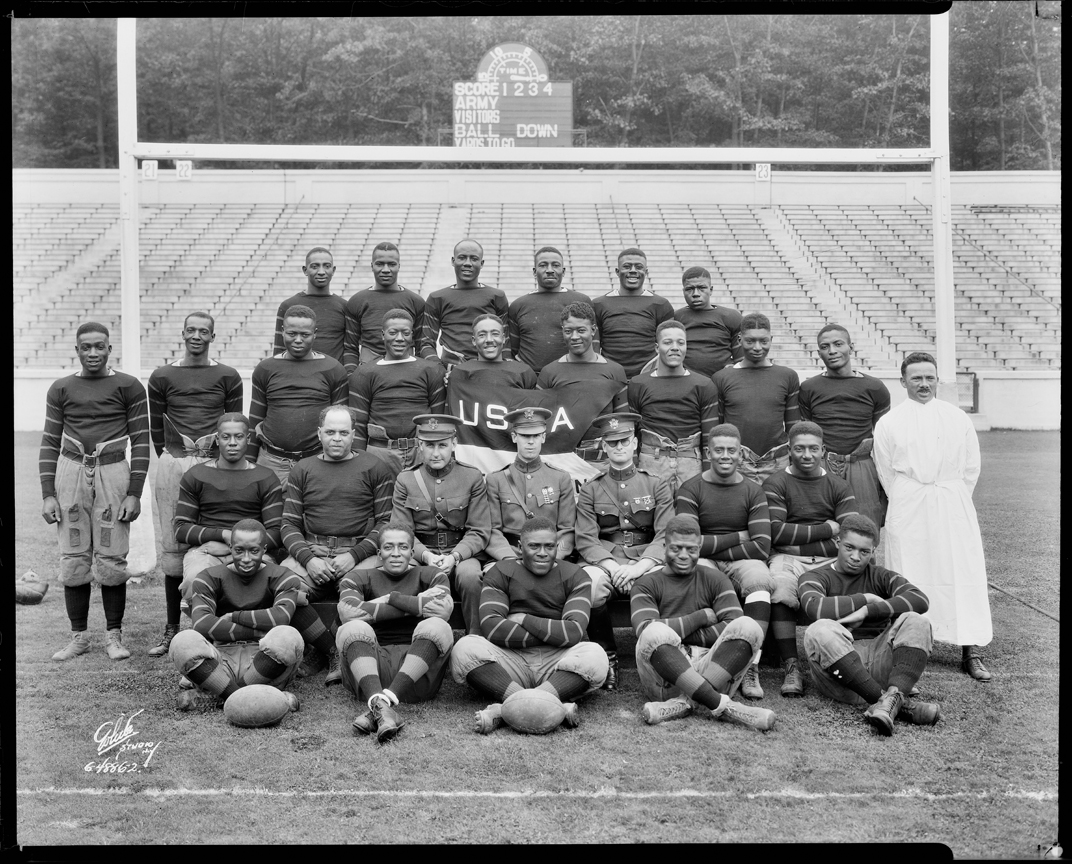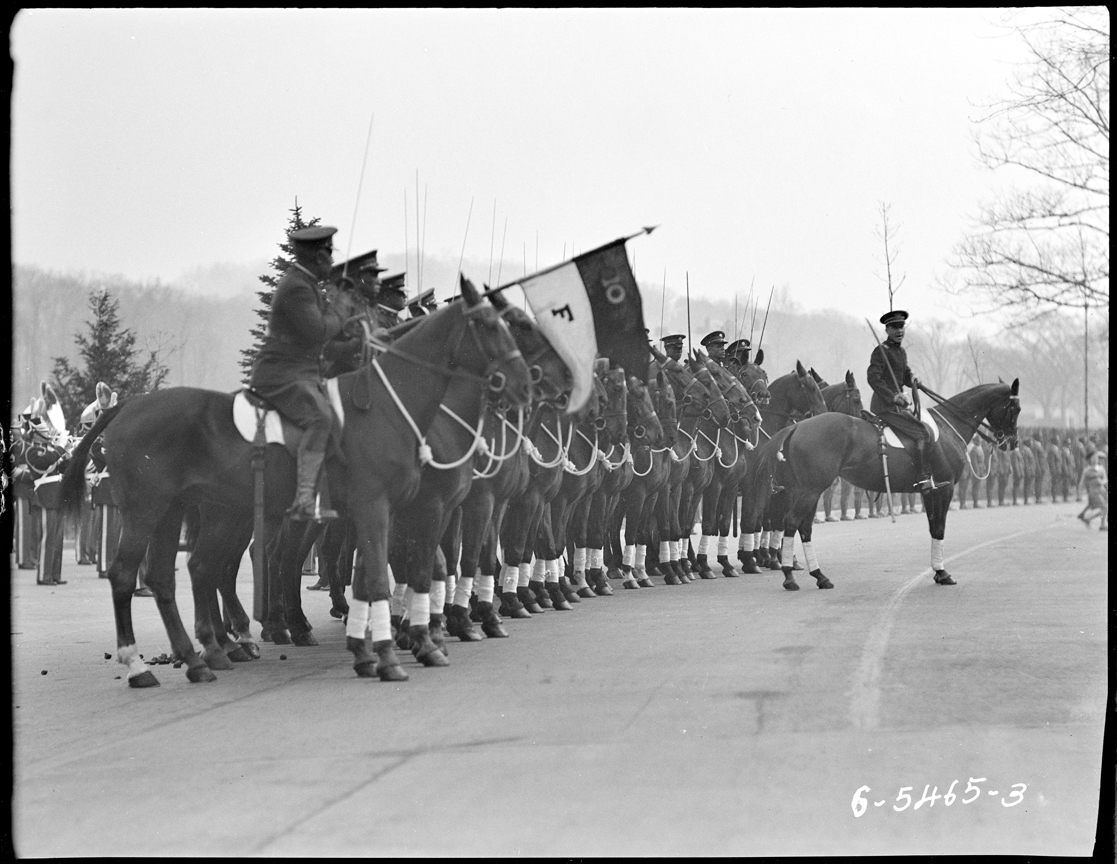
National Archives Unveils Photos of Buffalo Soldiers at West Point
By Michael Davis and Miriam Kleiman | National Archives News
WASHINGTON, February 26, 2021—The National Archives recently shared 12 photographs of Buffalo Soldiers serving at the U.S. Military Academy at West Point, NY, decades before the military was officially integrated. The photos are from a collection of negatives being digitized by the National Archives, and they haven’t been available to the public before now.
The role of Buffalo soldiers at West Point (1907–47) isn't a new story, but these pictures provide a glimpse into their role on campus, formally and informally, at the height of segregation.
Showcasing a variety of campus activities, including equestrian training and football practices, the images were discovered by Richard Schneider, a preservationist in the Still Pictures Branch of the National Archives at College Park, MD, who was digitizing thousands nitrate negatives that were transferred from the military academy.
This collection consists of approximately 20,000 nitrate and acetate negatives (32 cubic feet) created by White Studio of New York City, which had been contracted by the U.S. Military Academy to perform photographic work starting in 1912.
“I was requested to work on this body of records that were in our cold storage facility, waiting for digitizing,” said Schneider. “These photos were shot on nitrate-based film and can't be used by researchers in their current form. In order to meet the needs of our customers, we would have to digitize them, or otherwise duplicate them, in order to perform both a preservation function and allow for access, which is the core mission at the National Archives.”
As a nitrate negative deteriorates over time, its emulsion layer can become brittle and flake off, resulting in the loss of the image. Schneider said preserving these historical photographs enables permanent access and allows people to see images that they may not have had the opportunity to see before.
In the process of making access happen, explained Schneider, “I have a camera on a stand facing down at a light table, which has the negative image that I’m copying. But when I shoot the picture, it still looks like a negative in the camera’s preview. I then have to go into Photoshop and reverse it so that it turns the negative into a positive.”
Schneider said that is when he discovered 12 images that were different from the rest of the batch—showing Black soldiers at West Point during the time of a segregated military.
“Let's face it, there weren’t that many Black faces in the 1920s at West Point,” Schneider said . “The first image I saw was of this football team, and I only knew that it was Black players when I reversed the image. It was just an unusual image to come across.”
Recognized for their expertise in riding, African American cavalry noncommissioned officers of the 9th and 10th Cavalry Regiments, also known as the Buffalo Soldiers, were stationed at West Point to serve in the academy’s Detachment of Cavalry, and teach academy cadets military horsemanship. Starting in 1907, the detachment became a “colored unit” composed of African American soldiers at a time when the military was still racially segregated. The Buffalo Soldiers instructed cadets until 1947.
The Buffalo Soldiers provided cadets with riding instruction and mounted drill, which was conducted on the grounds formerly known as the Cavalry Plain. The training field was renamed Buffalo Soldiers Field in 1973.
“The way that African American soldiers were treated by the U.S. Army until fairly recently was awful,” said West Point’s Professor Emeritus of History Army Col. Ty Seidule, in a recent video. “Part of what we can do now is to talk about it and do whatever we can now to recognize what they have done and what they contributed to West Point, to the U.S. Army, and to the nation.”
The National Archives is playing its part in recognizing the Buffalo Soldiers by bringing these 12 previously unavailable photos to light and making them accessible to the public. In addition, in 2019, records related to Buffalo Soldiers became more accessible thanks to the efforts of volunteers who participated in a “scan-a-thon” at the National Archives in Washington, DC.“
"The contributions of African Americans to American history is being more widely disseminated, recognized, and appreciated,” Schneider said. “It goes without saying that the Buffalo Soldiers played a role at West Point, not only for ceremonial purposes, but also to teach the cadets about equestrian skills; they were the ones who taught them how to handle horses,” he said. “So you might see in another record group, in another body of work some White captain or major on horseback in a group shot. Well, that officer might have been trained by one of the Black Buffalo Soldiers at West Point. These are the kinds of things that are really important for people to see these days.”
You can explore more records relating to African American history online at Archives.gov. The African American History web page highlights National Archives resources and events, and the African American History research portal guides you to an assortment of records in the National Archives.

